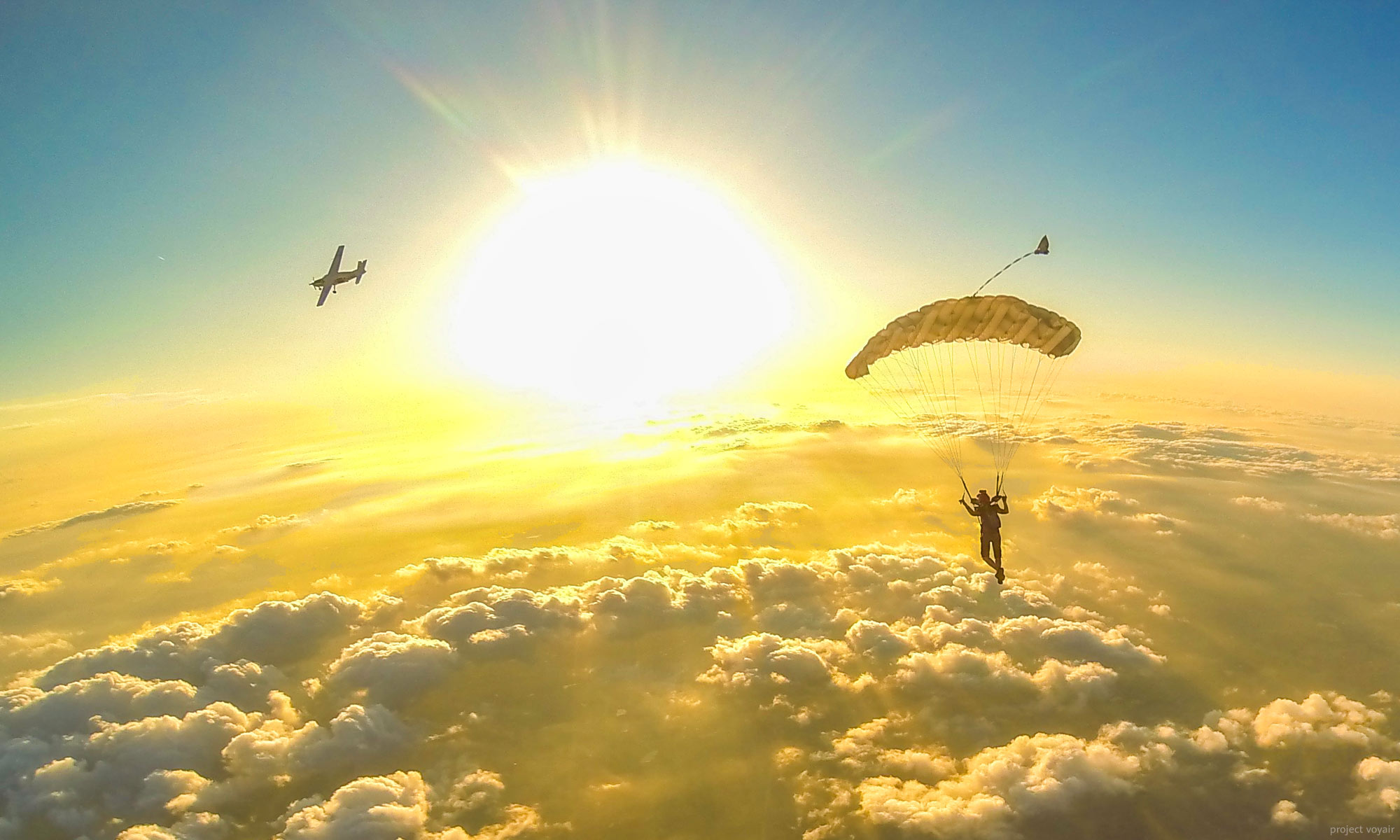(Video follows article)
Many manufacturing industries educate their employees about hand safety, especially when they have to work around heavy machinery. We don’t tend to talk about hand safety too much in skydiving, other than to recommend not wearing rings that can get hooked on things and to wear gloves when it’s really cold. Our focus on injury prevention usually focuses more on landings!
That said, there is a type of hand injury that can happen very quickly in skydiving, with very little in the way of safe options to resolve the situation.
First, how many of us put our hands on our risers while our main canopies are opening? Probably most of us, so check this out… if you have a violent line twist into your risers, and your hands are on those risers, it is possible for the twist to trap your finger(s). There is a LOT of tension on your risers in this scenario, and you will not be able to get your finger out… just ask Camilo.
Camilo deployed at around 4000 feet after an uneventful movement jump only to have a ghost-pepper-spicy deployment with an unstowed right toggle on his Comp Velo 90, loaded at 1.9:1. As the canopy started to inflate, his hands were gripped on the risers, ready to use them if/as needed to manage the opening.
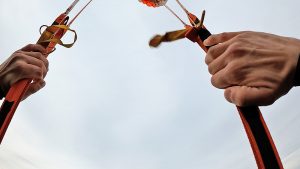
As parachutes often do, his canopy did the unexpected, initially turning right as it was still inflating (in the direction of the unstowed brake). As the turn continued, Camilo pulled his left rear riser to counter the turn. Note his left middle finger is through the excess brake line of the stowed brake… we’ll come back to that.
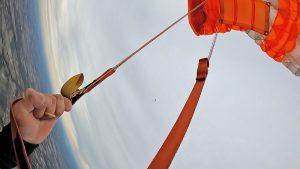
On full inflation, the canopy finally did as it was being told; the combination of the unstowed right brake and left rear riser input whipped it sharply back to the left to create the line and riser twist, trapping Camilo’s left middle finger in the twist.
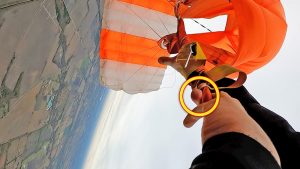
As the canopy added a few more twists and started to dive, he reached higher into the risers with his right hand, resulting in a very brief but undoubtedly terrifying moment where his right hand was trapped as well (this is the stuff of TRUE skydiving nightmares!). But Camilo yanked his right hand free and kept his wits; he knew this canopy was definitely not landable, so he had to cut away even though he worried the finger trap would keep the main attached to him. With his finger still trapped, about 10 seconds after the twist started, he did about the only thing he could do… he pulled the cutaway handle.
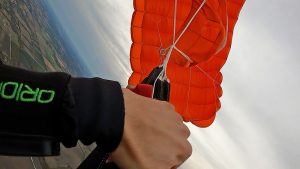
The main released cleanly and the reserve deployed immediately into line twists 2.0, which he was able to kick out of after several seconds of working that problem. Only then did he take a look at his left hand to realize the brake line looped around his finger, and/or the edge of the departing main riser, had sliced off part of his finger!

Despite the pain from his injury, Camilo was able to fly his Optimum to a comfortable stand-up landing on the DZ. Unfortunately, the doctors were not able to save his fingertip.
Good news: After a little time off to heal, he went right back to jumping, starting with fun jumps and video jumps, and now tandems again.
Props to Camilo for breaking off and deploying at a smart altitude of 4000 feet, leaving himself time and altitude to deal with a terrible issue while still having time and altitude to land safely!
Can this happen to you?
Obviously the tension on risers and lines will be higher with a highly loaded, high-performance canopy, but all of our risers and lines are pretty heavily loaded with our body weight under them. Any canopy turns (intentional or otherwise), common with line twists, only increase the load and potential for injury if your fingers are trapped in them.
Keep in mind that if you have downsized and/or changed to a higher-performance wing, problems on opening such as line twists will generally develop much more quickly and become much more violent than on your larger student/early canopies. Habits such as grabbing the risers to manage the opening can have far different results than they used to!
“People need to understand what damage parachute lines (and risers) are capable of when they’re loaded up,” commented Stephen Rosier, the DZ manager. “Also keep this in mind when you consider CReW and close canopy flocking, especially with high-performance canopies.”
How do you avoid this scenario?
- The best way to avoid this is to keep your hands completely away from your risers until the canopy is open.
- If you do put your hands on your risers, wrapping your fingers around them may not be the best plan in case of a line twist down into your risers like this. Also, it’s probably a better idea to keep your hands lower on the risers/closer to their anchor points on your shoulders where they are less likely to get caught up in a twist, moving them up only when you know they won’t get trapped.
- Consider your priorities during the deployment sequence. What’s most important, an on-heading opening or a fully open canopy? (Ideally both, of course, but if you have to pick I’d sure go with the open canopy.) Prioritize keeping your body aligned under the canopy if possible, even if it’s turning. As soon as it is open and flying, it will be a simple, non-dramatic task to put it back on your initial deployment heading with a rear riser.
Why? A parachute can’t fly normally when it’s not fully open. Your normal toggle and riser inputs may have very abnormal results, in other words. This case is a great example: The canopy initially turned the opposite way of both toggle and riser inputs while it was still inflating. Once the canopy inflated enough to load up all the lines, the left rear riser input plus the unstowed right toggle created the snap turn back to the left and the line/riser twist.
If you do feel the need to add control inputs to “manage” the opening, you’ll likely get more out of harness input than risers, and bonus: You won’t risk getting your hands caught in a twist.
- Keep your lines in good shape to reduce all sorts of canopy spiciness on opening, including line twists.
Be careful out there!
By Christy West, with Camilo Garcés Duque
